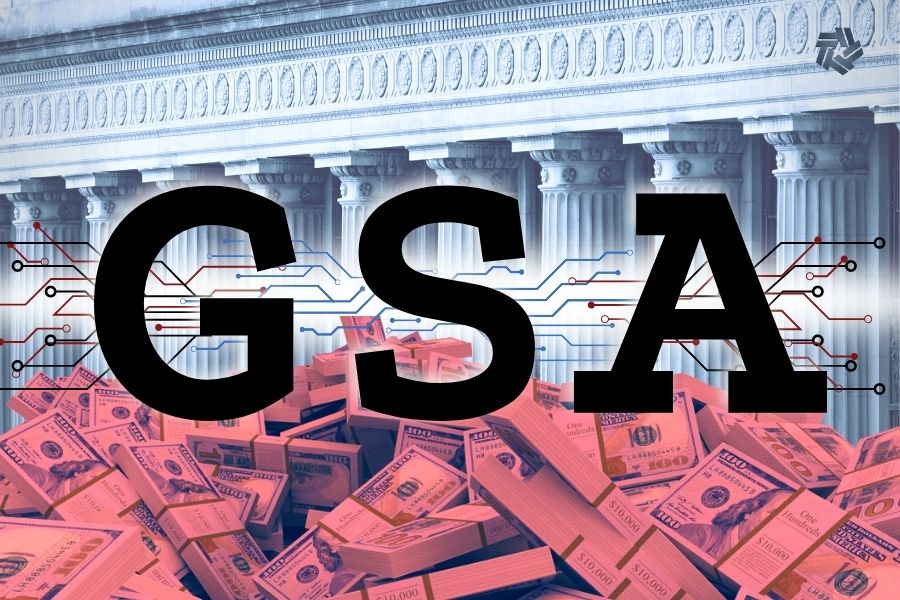This week, a surprising shake-up occurred that points to significant changes at Fannie Mae and Freddie Mac. Recently appointed Federal Housing Finance Agency director William Pulte appointed himself chairman of both government-sponsored enterprises, or GSEs, and pushed out 14 board members. These moves, disclosed in regulatory filings without explanation, have led to speculation that Pulte may be prepping to merge the two mortgage giants, which employ about 15,000 people.
His swift reorganization aligns with wider federal efforts to streamline operations, and although Pulte had previously indicated that privatization isn’t his biggest priority, it may still be on the horizon.
Fannie Mae and Freddie Mac support the mortgage market by buying loans from mortgage lenders, bundling them into mortgage-backed securities and selling them to investors. This increases the availability and affordability of mortgages and standardizes industry guidelines. But the Trump administration wants to privatize Fannie Mae and Freddie Mac, which could radically change the mortgage experience for consumers.
[Read: Best Mortgage Lenders]
Mortgages Under Trump: What’s Happening to Fannie Mae and Freddie Mac?
If you have a home loan or are pursuing one, chances are that Fannie Mae and Freddie Mac were or will be involved with that loan.
Understanding Fannie Mae and Freddie Mac
Fannie Mae, the Federal National Mortgage Association, and Freddie Mac, the Federal Home Loan Mortgage Corp., play a crucial role in making homeownership more accessible. They help ensure stability and liquidity in the housing market by purchasing mortgages from lenders, pooling them into mortgage-backed securities, selling those securities to investors and guaranteeing payment to those investors. In fact, they are the largest purchasers of home loans in the U.S. mortgage market.
“When banks lend you money to buy a house, they don’t have unlimited cash. They need to free up money to lend to more people, which is where Fannie and Freddie step in,” says Steven Glick, mortgage sales director for HomeAbroad, a fintech platform that provides mortgage solutions for foreign real estate buyers. “This process keeps the housing market stable by making sure there’s always money available for people looking to purchase a home. Without them, getting a mortgage would be harder and way more expensive.”
Fannie and Freddie establish guidelines that loans must meet, or conform to, in order to be sold through the GSEs. That’s why Fannie Mae and Freddie Mac mortgages are called conforming loans.
“The key differences between the two are subtle. Fannie Mae typically focuses on working with larger commercial banks, while Freddie Mac traditionally partners more with smaller banks and credit unions,” says Reed Letson, branch manager and owner of Elevation Mortgage. “Both follow similar guidelines for loan approval, including credit score requirements, debt-to-income ratios and maximum loan limits.”
Why Trump Wants to Privatize Freddie Mac and Fannie Mae
Freddie and Fannie were privately held companies operating independently before 2008. After the housing market crashed that year, they were placed into a conservatorship, where they have remained. This was intended to be a temporary measure, effective only until Freddie and Fannie could repay their Treasury loans and operate independently again, but this journey has taken much longer than anticipated.
The plan to get the GSEs out of government control has been underway for years. As part of this effort, the Treasury Housing Reform Plan was introduced in 2019, outlining measures to recapitalize the GSEs, scale back government support and shrink their market presence.
“Privatizing the GSEs could be seen as a huge potential success for investors and unfinished business for the Trump administration, since the last time GSE reform was actively pursued was the second half of the first Trump presidency,” says Kenon Chen, executive vice president of strategy and growth at Clear Capital, a real estate valuation company. “Privatization is also consistent with the Trump administration’s efforts to reduce regulation and the scope of government oversight.”
How Privatization Would Change Mortgages
Many experts agree that privatizing Freddie Mac and Fannie Mae could significantly alter the way these GSEs function and the overall mortgage market.
“If privatized, these institutions would operate like private companies without government backing. This would lead to stricter lending requirements and potentially higher mortgage rates, as they would need to generate higher returns for shareholders,” Letson says. “Also, private lenders may be more prone to taking excessive risks during boom times, as we witnessed during the 2008 financial crisis. Without proper oversight, some lenders may offer loan products that borrowers don’t fully understand.”
Dennis Shirshikov, an adjunct professor of economics at The City University of New York and real estate investor, says privatization may be a good thing but could also give consumers whiplash.
“Privatization would fundamentally transform the operational model of these entities by shifting their oversight from a government-backed framework to one governed by market forces, thereby subjecting them to the full weight of competitive pressures and risk assessments,” Shirshikov says. “This could lead to mortgage rates that more directly reflect market conditions and may even introduce periods of volatility as the new risk paradigms settle.”
Privatization could trigger increased innovation and greater market participation, resulting in more competitive mortgage pricing, says Ralph DiBugnara, founder of Home Qualified, a digital resource for real estate buyers and sellers.
“They may be able to create more products with larger reach to more customers,” he says. Without federal restrictions, DiBugnarra says, Fannie and Freddie “will have more freedom to go outside of the box.”
[READ: Compare Current Mortgage Rates]
Trump Mortgage Rates: What the Experts Say
Many experts say mortgage interest rates under Trump could spike if the GSEs are privatized. How much impact might consumers see?
How Rates Would Be Affected
Glick says mortgage rates could jump by 0.5 to 1 percentage point almost immediately following Fannie and Freddie privatization.
Right now, we are seeing 30-year fixed rates in the high 6% range. “But if privatization happens, that could easily hit 7.5% or even 8% in the first year,” Glick says. “Over time, rates could stabilize, but only if private investors step in to replace the security that government backing provides today. If the transition is messy, rates could go even higher, and that would seriously impact home affordability.”
Letson aligns with Glick’s rate predictions, also foreseeing a rate jump of 1 percentage point or higher within the first six to 12 months of privatization. After two to three years, however, he expects the market would adjust as private competition increases.
Shirshikov says within the first six to twelve months of privatization, mortgage rates could increase by approximately 0.25 to 0.5 percentage points as the market recalibrates to new risk assessments. “Over a subsequent two- to three-year period, if market conditions stabilize and competition spurs efficiency, there is a possibility for rates to moderate, potentially declining by 0.1 to 0.2 (percentage points) from their post-privatization highs,” he says.
Could Privatization Happen?
Whether you are a prospective first-time homebuyer, a move-up shopper or a homeowner seeking to refinance, it’s normal to be concerned about the prospects of privatization and its likely effect on mortgage rates. But how realistic is it that Freddie Mac and Fannie Mae will be privatized anytime soon — or ever?
Consider that privatization faces significant hurdles. Letson believes full privatization is unlikely in the near term, as the GSEs — which currently back roughly $7 trillion in mortgages — are too important to housing market stability.
“Any major disruption could severely impact housing affordability and market access. It’s crucial for this government backing to maintain competitive interest rates for homebuyers,” says Letson. Also, “There is no clear consensus on a viable private-sector alternative that could maintain market stability while protecting taxpayers. The complexity of unwinding the current system, combined with political disagreements about reform approaches, creates significant implementation challenges.”
Of course, he made that statement before Pulte’s move jolted the GSEs and the mortgage industry.
“Honestly, this is one of the most aggressive moves we’ve seen at Fannie Mae and Freddie Mac in a long time,” Glick says. “Firing 14 board members and installing himself as chairman? That’s not just a shake-up — it’s a clear signal that Pulte wants full control over what happens next. The big question is: Does this mean fast-tracking privatization, or is this about making Fannie and Freddie more efficient before taking that step? Either way, change is coming, and it’s coming fast.”
Glick believes that the privatization of Fannie Mae and Freddie Mac will now happen even sooner than many experts anticipate.
“This kind of overhaul usually happens when someone has a game plan — and I’d bet Pulte has one. That said, full privatization isn’t something that happens overnight. It’s a huge shift, and there are a lot of regulatory and market factors at play. If this is the goal, we could start seeing major moves in 12 to 24 months, but full privatization could still take years to execute properly.”
[Calculate: Use Our Free Mortgage Calculator to Estimate Your Monthly Payments.]
What Should Borrowers Do?
That begs an important question: If you’re planning to pursue a home purchase or refinance in the near future, how should you proceed, considering a possible privatization of Fannie Mae and Freddie Mac?
Glick believes that lenders and investors are going to be watching every subsequent move by Pulte and the Trump administration closely.
“Any time there’s uncertainty at Fannie and Freddie, it makes the market a little jittery. We might see some short-term rate volatility as the industry figures out what this means,” he says. “For borrowers: Not much will change right away. Your 30-year mortgage isn’t suddenly disappearing, and interest rates won’t skyrocket overnight. But if lenders start pricing in risk, we could see shifts in rates.”
Chen says, “The process to exit conservatorship could easily take a couple of years to achieve at minimum, so there is quite a bit of change that could happen in the market between now and then. Borrowers would benefit more from timing a purchase based on their own financial readiness and goals rather than focusing too much on the potential privatization at this time.”
Indeed, experts recommend continuing to use good financial judgment when considering a mortgage. That means saving for a down payment, making sure you can afford the mortgage you’re taking out and, in light of potential market volatility, locking in a favorable mortgage rate when possible.
Lastly, don’t panic or make rash financing decisions based on what you may read in the news.
“The media will always speculate about what could happen,” says Glick. “But the best buyers can do is focus on their personal financial situation.”
More from U.S. News
Surprise: Millennials Have the Lowest Mortgage Rates of Any Generation
Is Mortgage Interest Tax Deductible?
What Is a Mortgage Commitment Letter?
Mortgages Under Trump: What Happens if He Privatizes Fannie Mae and Freddie Mac? originally appeared on usnews.com
Update 03/21/25: This story was previously published at an earlier date and has been updated with new information.













